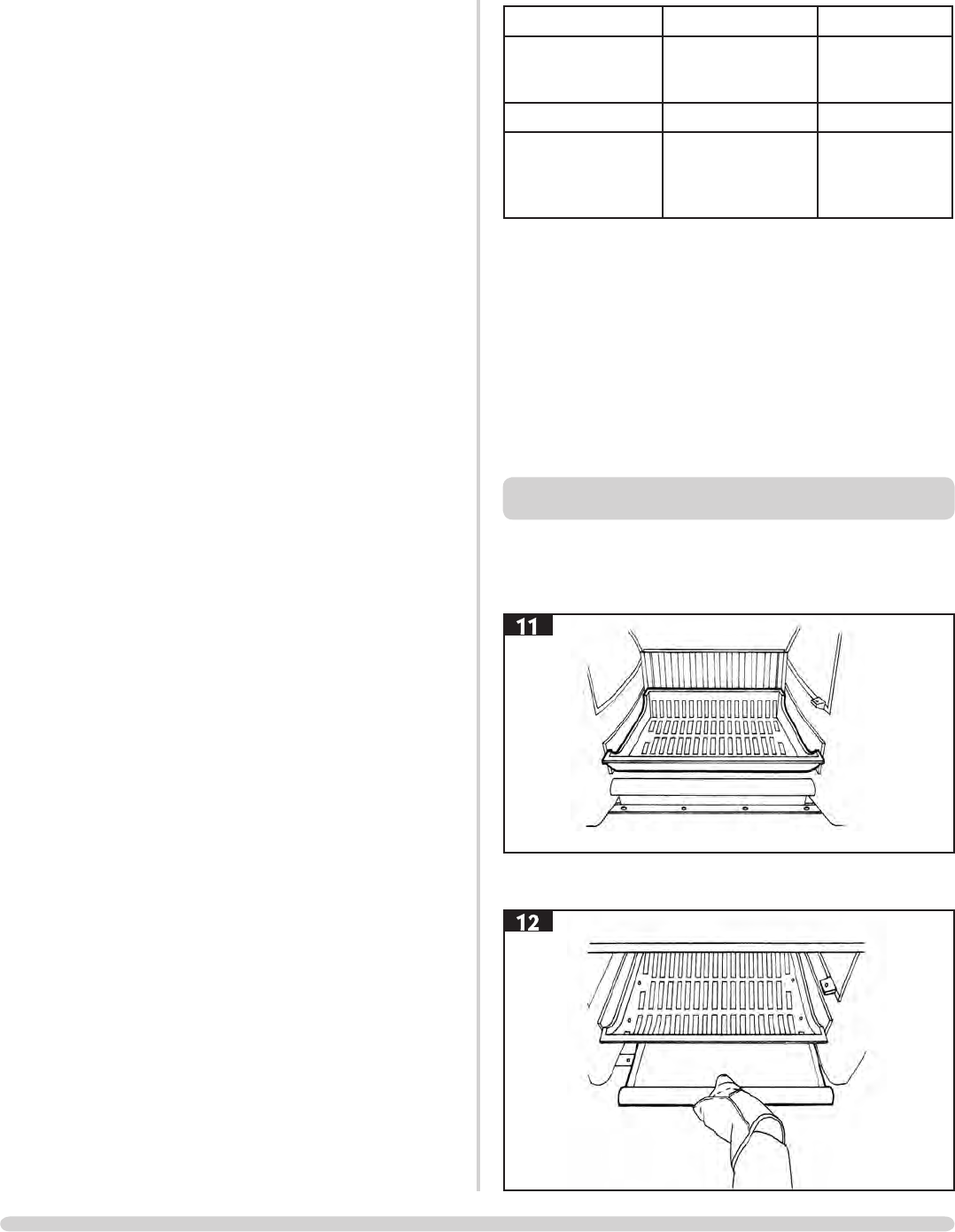
8
USER INSTRUCTIONS
Weather Conditions Problem Effect
Windy days
Buildings/Obstacles
cause turbulent air
around chimney.
Smoky Appliance
Calm days
Oversized Chimney. Smoky Appliance
Damp / Rainy days
Flue temperature
not hot enough.
Rain water inside
chimney.
Lighting and
burning problems
To reduce these problems:
•Usegoodqualitykindlingwoodtostartthefire
•Burninitiallyatahightemperatureforashortperiod
•Fitaraincowltothechimney
Your installer should advise you on possible solutions.
If the appliance emits smoke into the room continuously:
•Closetheaircontrolsandallowtheappliancetogoout
•Ventilatetheroomtoclearthefumes
Do not re-light the appliance until the problem is solved.
7. ASH REMOVAL
7.1 All Fuels:
•OpenDoors,SeeDiagram11
AR2110
•RemoveAshpan,SeeDiagram12
AR2109
— Smoke and small flames
— Dirty firebricks
— Short life span for grate, baffles and internal firebricks
6.3 Air inlets puffing smoke
Combustion gases build up in the firebox and ignite as small
explosions, causing smoke to puff out of the air inlets and
other openings. This occurs if the air controls are shut soon
after adding new fuel to a very hot fire. Stop by opening the
air controls to increase combustion air and burning rate.
6.4 Flue Draught
The chimney has two main functions:
1) To safely remove the smoke, gases and fumes from the
house.
2) To provide a sufficient amount of draught (suction) in the
appliance ensuring the fire keeps burning.
Draught is caused by the rising hot air in the chimney when
the appliance is lit.
Symptoms of poor performance related to flue draught
include:
— Excessive fuel consumption (high flue draught)
— Poor burning control, overheating (high flue draught)
— Wind noise from air controls (high flue draught)
— Difficulty getting a fire going and keeping it burning well
(low flue draught)
— Low heat output (low flue draught)
— Smoke entering room when doors opened (low flue
draught)
The construction, position, size and height of the chimney
all affect the performance of the flue draught.
Other factors effecting the flue draught include:
— Trees or other buildings nearby causing turbulence
— High and gusty winds
— Outside temperature
— Outside weather conditions
— Incorrect additional ventilation to building
—Blockedflue/chimney
For advice on the correction of persistent flue problems
consult a qualified solid fuel heating engineer before
continuing to use the appliance.
6.5 Weather conditions
The weather conditions outside the building can effect the
burning performance of the appliance. These could include:


















